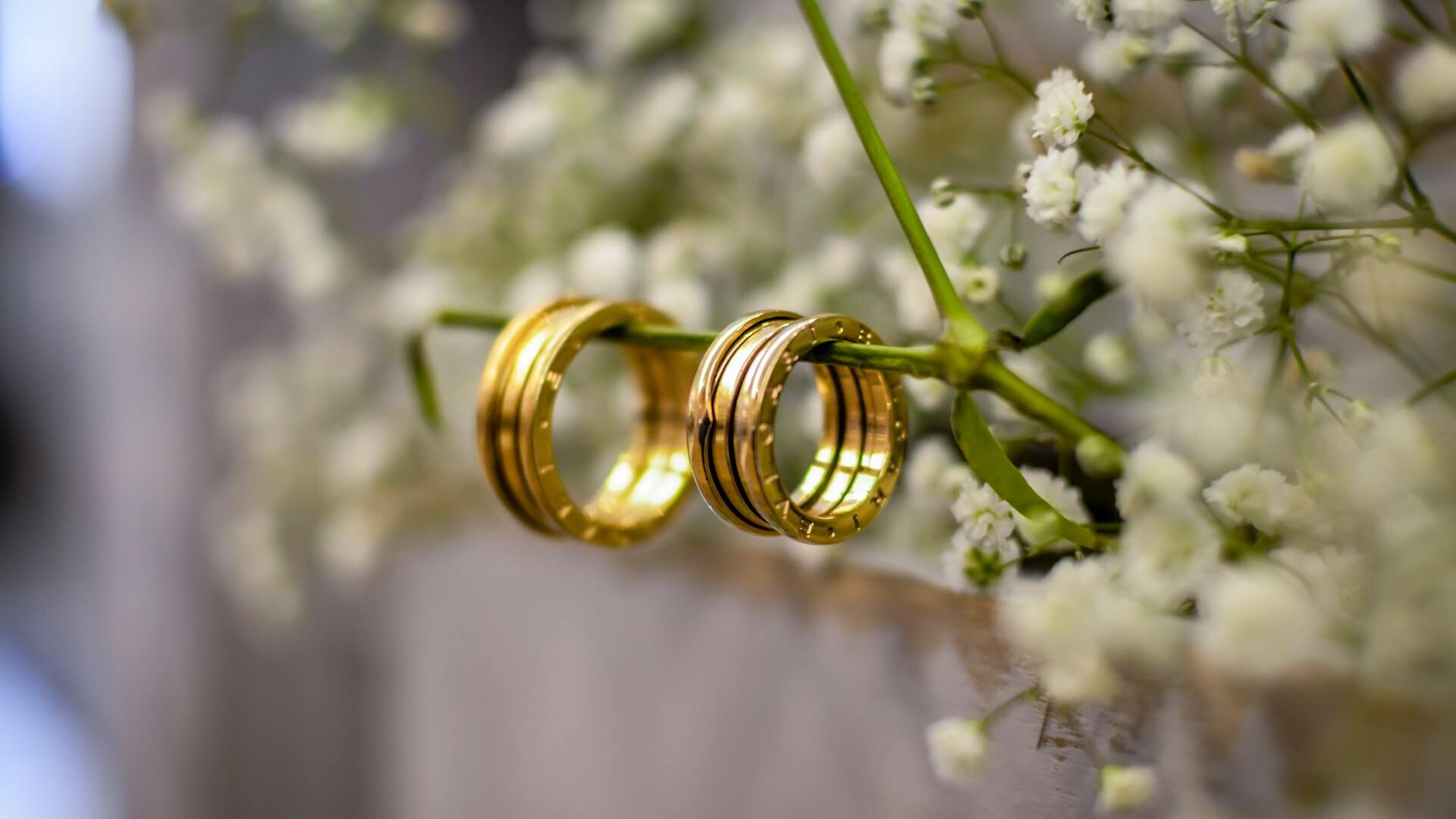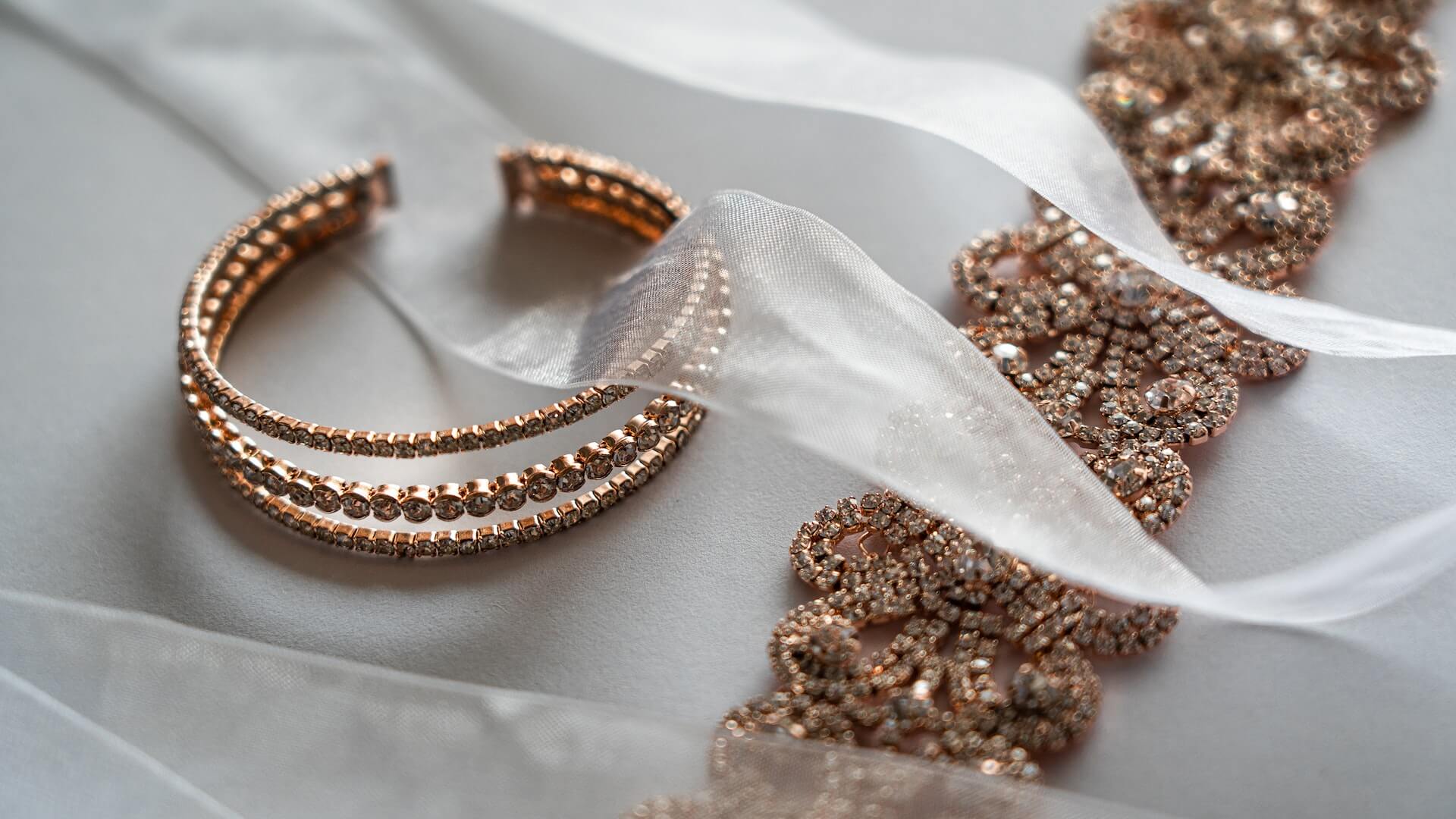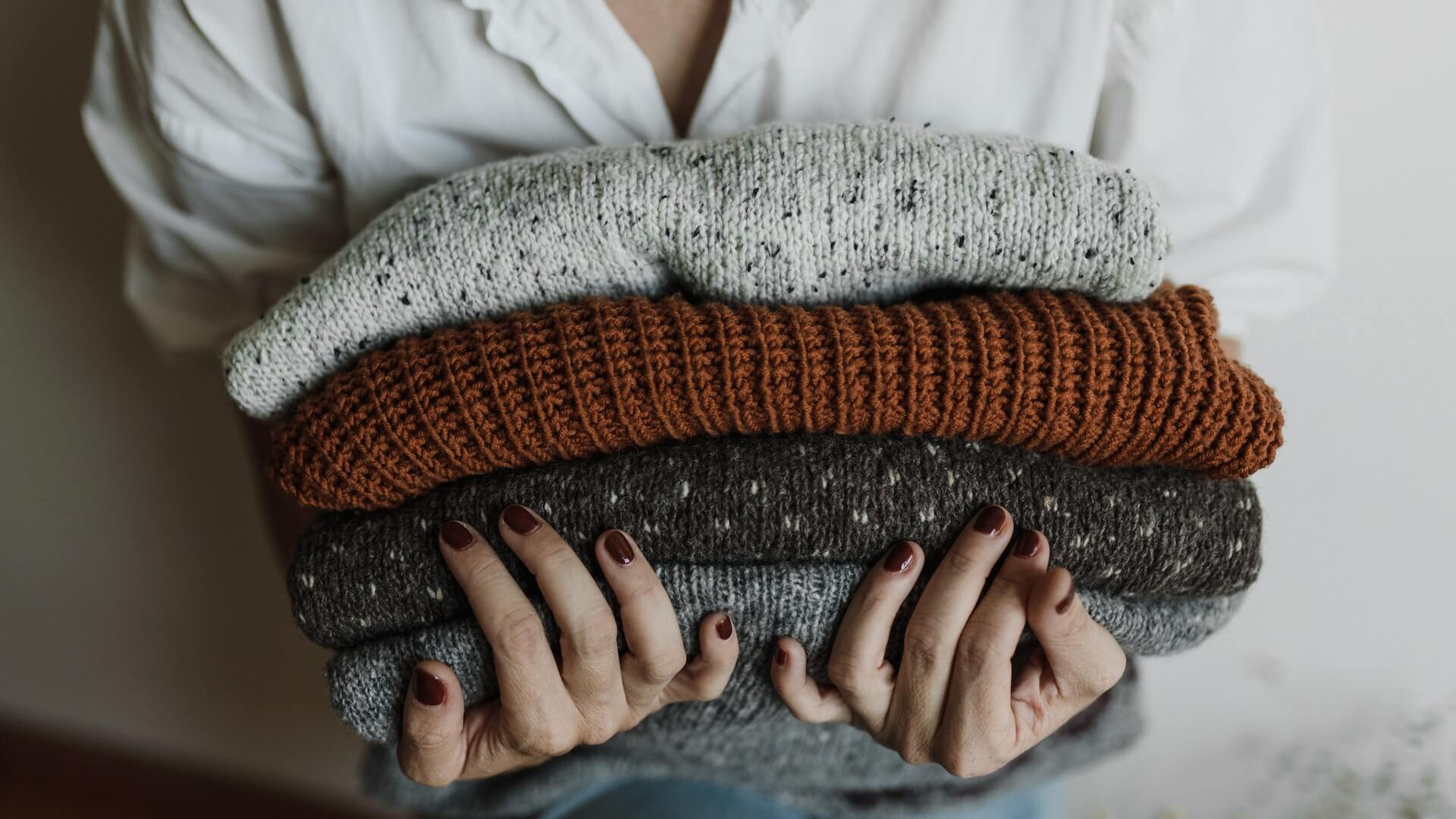Jewelry making is a timeless art form that allows you to express your creativity and showcase your personal style. Whether you’re a beginner or an experienced crafter, jewelry making is a fun and relaxing way to create unique pieces that reflect your personality. From necklaces and bracelets to earrings and rings, the possibilities are endless when it comes to jewelry making. Not only is it a great way to unleash your creativity, but it’s also a great way to make gifts for loved ones or even start a small business. In this post, we’ll explore the basics of jewelry making and provide you with tips and tricks to help you get started on your creative journey. So, grab your tools and let’s get started on the art of jewelry making!
Introduction: The allure of jewelry making and its creative potential
Jewelry making is an art form that has captivated human beings for centuries. From ancient civilizations to modern-day enthusiasts, the allure of crafting unique adornments has never waned. There is something truly magical about transforming raw materials into exquisite pieces that reflect one’s individual style and personality.

At its core, jewelry making is a channel for creativity and self-expression. It allows you to unleash your imagination and bring your visions to life through the careful selection of materials, intricate designs, and meticulous craftsmanship. The possibilities are endless, limited only by your imagination and skill.
One of the most captivating aspects of jewelry making is the ability to create one-of-a-kind pieces that cannot be replicated. Whether you prefer delicate and dainty designs or bold and statement-making pieces, jewelry making offers a platform to explore your unique artistic voice. With each piece you create, you have the opportunity to showcase your personal flair and leave a lasting impression on those who wear your creations.
Moreover, jewelry making provides a sense of fulfillment and satisfaction that comes from the act of creating something tangible and beautiful with your own hands. The process itself is a journey of discovery, as you experiment with different techniques, materials, and styles. As you delve deeper into the art of jewelry making, you will uncover hidden talents and unlock new levels of creativity that you never knew existed.
Materials and Tools: A comprehensive guide to the essential supplies you’ll need
Whether you’re a beginner or a seasoned jewelry maker, having a comprehensive guide to the essential supplies will help you unleash your creativity.
First and foremost, you’ll need a variety of beads, gemstones, and charms to create stunning pieces. Beads come in different shapes, sizes, and materials, such as glass, crystal, metal, or natural stones. Gemstones add a touch of elegance and can range from precious stones like diamonds and rubies to semi-precious stones like amethyst and turquoise. Charms, on the other hand, can be personalized and add a unique element to your jewelry.
In addition to beads and gemstones, you’ll require various findings and components. Findings include clasps, jump rings, ear wires, and headpins, which are essential for connecting different elements of your jewelry. These findings come in different metals like sterling silver, gold-filled, or brass, allowing you to choose the right finish for your design. Components like chain, wire, and cord are also necessary for creating necklaces, bracelets, and earrings.
To bring your designs to life, you’ll need a set of tools specifically designed for jewelry making. Basic tools include round nose pliers, chain nose pliers, and wire cutters. These tools allow you to manipulate wire, open and close jump rings, and create loops for earrings or pendants. Additionally, you may need specialized tools like crimping pliers for securely attaching clasps or bead reamers for enlarging bead holes.
It’s also important to have a comfortable and organized workspace. A well-lit area with a stable work surface is essential. Consider investing in a bead mat or bead board to prevent beads from rolling away and keep your work organized. Having storage solutions like small containers or bead organizers will help you keep your materials and tools neatly arranged and easily accessible.
Getting Started: Step-by-step instructions for beginners
Getting started with jewelry making can be an exciting and fulfilling journey. Whether you’re looking to create stunning pieces for personal use or to sell your own unique designs, here are some step-by-step instructions to help beginners unleash their creativity in the art of jewelry making.

1. Gather your supplies:
Start by collecting the necessary tools and materials for your jewelry making endeavors. These may include wire cutters, pliers, beads, findings, and a workspace with good lighting. Invest in high-quality tools that will last and ensure precision in your work.
2. Choose your design:
Decide on the type of jewelry you want to create. It could be earrings, necklaces, bracelets, or even intricate pendants. Explore various styles and techniques to find inspiration or create your own unique design.
3. Select your materials:
Once you have your design in mind, select the appropriate materials that match your vision. Consider factors such as color, texture, and durability. Beads, gemstones, and metals can all be combined to create stunning pieces that reflect your personal style.
4. Plan your layout:
Lay out your materials and visualize how they will come together in your design. This step is crucial to ensure a cohesive and aesthetically pleasing final piece. Experiment with different arrangements until you’re satisfied with the overall look.
5. Start assembling:
Begin by attaching findings, such as jump rings or clasps, to your main components. Use pliers to open and close these findings securely. Then, string beads, gemstones, or charms onto wire or thread, and connect them to your findings. Take your time and pay attention to detail, ensuring each connection is secure.
6. Add finishing touches:
Once you’ve assembled the main components, it’s time to add any additional embellishments or finishing touches. This could include adding decorative charms, using crimp beads to secure the ends of your jewelry, or incorporating unique techniques like wire wrapping or bead weaving.
7. Test and adjust:
Before considering your piece complete, test its durability and comfort. Make sure the clasps are secure, the beads are tightly strung, and the overall structure is sturdy. Adjust any parts that need reinforcement or alteration.
8. Enjoy your creation:
Finally, step back and admire your handcrafted jewelry. Wear it proudly or showcase it to others. Jewelry making is not only a creative outlet but also a way to express your personal style and make unique pieces that can be cherished for years to come.
Different Techniques: Exploring various jewelry making techniques, such as wire wrapping, beading, and metal stamping
When it comes to jewelry making, there are endless possibilities to explore. One of the exciting aspects of this craft is the wide range of techniques that can be used to create unique and stunning pieces. In this section, we will delve into some of the most popular techniques in jewelry making: wire wrapping, beading, and metal stamping.
Wire wrapping is a versatile technique that involves manipulating wire to create intricate designs. It allows you to showcase beautiful gemstones or beads by securely wrapping the wire around them, creating a stylish and elegant look. This technique offers endless opportunities for creativity, as you can experiment with different wire thicknesses, colors, and wrapping patterns to achieve various effects.
Beaded jewelry making is a technique that involves stringing beads together to form beautiful patterns and designs. From delicate seed beads to dazzling crystal beads, the options are endless. Beading allows you to play with colors, shapes, and textures, giving you the freedom to design pieces that reflect your personal style. Whether you prefer simple and minimalistic designs or bold and statement-making pieces, beading offers a wealth of creative options.
Metal stamping is a technique that involves using metal stamps to impress designs or patterns onto metal surfaces. This technique is perfect for creating personalized jewelry pieces, as you can stamp names, initials, or meaningful symbols onto metal charms, pendants, or bracelets. Metal stamping allows you to add a personal touch to your creations, making them truly one-of-a-kind.
Finding Inspiration: Tips for sourcing design ideas and developing your unique style
Finding inspiration is a crucial aspect of jewelry making. It allows you to explore new ideas and develop your unique style. Here are some tips to help you source design ideas and unleash your creativity in the world of jewelry making.

1. Nature as a Muse:
Mother Nature is an abundant source of inspiration. Take a stroll in the park, visit a botanical garden, or simply observe the intricate details of flowers, leaves, and shells. Nature’s beauty can inspire unique shapes, patterns, and color combinations for your jewelry designs.
2. Travel and Cultural Influences:
Traveling exposes you to different cultures, traditions, and artistic expressions. Immerse yourself in local markets, museums, and craft workshops. Pay attention to the unique jewelry designs and techniques used by different cultures. Incorporate elements of these designs into your own creations, adding a touch of cultural flair to your jewelry.
3. Art and Architecture:
Explore various art forms such as paintings, sculptures, and architecture. Visit art galleries, attend exhibitions, and study different art movements. The colors, textures, and shapes used by artists can ignite your imagination and inspire innovative jewelry designs.
4. Fashion and Trends:
Keep an eye on fashion trends and the latest jewelry styles. Fashion runways, magazines, and online platforms are great sources of inspiration. Look for popular color palettes, materials, and design elements that you can incorporate into your own jewelry pieces while adding your personal twist.
5. Personal Experiences and Stories:
Draw inspiration from your own life experiences, memories, and emotions. Jewelry can be a powerful storytelling medium. Reflect on significant moments, symbols, or personal milestones that hold meaning to you. Transform these narratives into wearable art that resonates with others.
6. Experimentation and Collaboration:
Don’t be afraid to experiment with different materials, techniques, and styles. Embrace the unexpected and allow yourself to make mistakes along the way. Collaborate with other artists, designers, or even friends who share the same passion for creativity. Their perspectives and insights can spark new ideas and push your creativity to new heights.
Choosing the Right Materials: Factors to consider when selecting beads, gemstones, metals, and other materials
The materials you select will not only determine the appearance and quality of your finished piece but also play a significant role in the overall durability and wearability of your jewelry.
When it comes to beads, there is a vast array of options available, each with its own unique characteristics. Consider factors such as size, shape, color, texture, and material composition when choosing beads for your jewelry. Whether you prefer the elegance of glass beads, the natural beauty of gemstone beads, or the versatility of acrylic beads, ensure that your selection complements your design vision.
Gemstones, with their exquisite colors and natural patterns, add a touch of luxury and sophistication to any piece of jewelry. However, it is essential to take into account the hardness and durability of gemstones, as well as their availability and cost. Some popular gemstones include amethyst, turquoise, garnet, and quartz, but the choices are virtually endless. Choose gemstones that resonate with your design concept and align with your customers’ preferences.
Metals are another crucial consideration in jewelry making. Different metals offer varying levels of durability, hypoallergenic properties, and aesthetic appeal. Sterling silver is a popular choice known for its affordability, versatility, and timeless elegance. Gold, whether in its classic yellow form or the more contemporary rose gold or white gold variations, exudes luxury and durability. Other metals like copper, brass, and stainless steel can be excellent alternatives for adding unique touches to your designs.
Beyond beads, gemstones, and metals, other materials such as chains, clasps, wire, and stringing materials are equally important to consider. The quality and functionality of these elements can greatly impact the overall wearability and longevity of your jewelry.
Adding Personal Touches: How to incorporate personalized elements into your jewelry designs
Adding personalized touches to your jewelry designs can elevate them from beautiful pieces to cherished keepsakes. By incorporating elements that hold special meaning for the wearer, you can create unique and meaningful pieces that resonate with your customers on a deeper level.

One way to infuse personalization into your jewelry designs is through the use of birthstones. Birthstones hold significance and are associated with specific months of the year. By incorporating the birthstone of the wearer or their loved ones, you can create a piece that celebrates their identity and adds a personal touch. Whether it’s a necklace with a pendant adorned with a birthstone or a ring with multiple birthstones representing family members, these pieces are not only visually stunning but also hold sentimental value.
Another way to add personalization is through the use of initials or monograms. Engraving or incorporating initials into your designs can make them truly one-of-a-kind. Whether it’s a delicate bracelet with engraved initials or a pendant with a monogram, these personalized touches can make the piece feel uniquely theirs.
Consider incorporating meaningful symbols or charms into your jewelry designs. For example, a heart symbolizes love and can be incorporated into a necklace or bracelet to represent a special bond. A charm representing a hobby or passion of the wearer can add a personal touch and make the piece feel more meaningful.
Additionally, consider offering customization options to your customers. This could include allowing them to choose the type of metal, gemstones, or even the design elements of the piece. By involving them in the design process, you are creating a truly personalized piece that reflects their individuality and style.
Troubleshooting: Common challenges and how to overcome them
While jewelry making can be a fulfilling and creative endeavor, like any craft, it is not without its challenges. In this section, we will explore some common issues that jewelry makers may encounter and provide practical solutions to overcome them.
One common challenge is working with delicate materials such as fine chains or thin wires. These materials can be prone to tangling or breaking, especially if not handled with care. To overcome this, it is important to work in a well-organized and clutter-free workspace. Use small containers or compartments to keep different materials separated and untangled. Additionally, investing in quality tools and learning proper techniques for handling delicate materials will go a long way in preventing mishaps.
Another challenge is achieving a professional finish on your jewelry pieces. Uneven or messy finishes can detract from the overall aesthetic appeal of your creations. To tackle this issue, take the time to practice your finishing techniques, such as filing, sanding, and polishing. Experiment with different tools and materials to find what works best for your desired finish. Don’t be afraid to seek guidance from experienced jewelers or online tutorials to learn new techniques and refine your skills.
One of the most frustrating challenges for jewelry makers is when a design doesn’t turn out as envisioned. It can be disheartening to invest time and effort into a piece only to realize it doesn’t meet your expectations. In such situations, it is crucial to embrace the creative process and see mistakes as opportunities for growth. Take a step back, assess the design, and identify areas for improvement or modification. Don’t be afraid to experiment and try different approaches to achieve the desired outcome.
Lastly, a challenge that many jewelry makers face is finding inspiration and staying motivated. Creative blocks happen to the best of us, but there are ways to overcome them. Engage with other jewelry makers and join online communities or local workshops to connect with like-minded individuals. Explore different sources of inspiration, such as nature, art, or cultural influences. Take breaks when needed, as stepping away from your work can often lead to fresh ideas and renewed enthusiasm.
Tips for Success: Expert advice to enhance your creativity and improve your craftsmanship
As you embark on your creative journey, here are some expert tips that will surely help you unleash your creativity and take your craftsmanship to the next level.

1. Embrace Inspiration:
Seek inspiration from various sources such as nature, art, fashion, and even everyday objects. Keep an open mind and train yourself to observe the intricate details that surround you. Inspiration can strike at any moment, so always carry a notebook or use a digital tool to capture your ideas.
2. Experiment with Materials:
Don’t limit yourself to conventional materials. Explore a wide range of beads, gemstones, metals, fabrics, and even unconventional materials like recycled items or natural elements. Experimenting with different materials will add a unique touch to your creations and spark your creativity.
3. Learn Techniques:
Dedicating time to learn various jewelry making techniques is essential for improving your craftsmanship. Attend workshops, enroll in online courses, or explore tutorials to expand your skill set. Mastering techniques like wire wrapping, bead weaving, soldering, and stone setting will give you the confidence to create intricate and professional-looking pieces.
4. Practice Patience:
Jewelry making is a meticulous craft that requires patience. Take your time with each piece and pay attention to detail. Don’t rush the process, as precision and careful craftsmanship will make a significant difference in the final outcome.
5. Network and Collaborate:
Connect with other jewelry makers, join communities, attend trade shows, or participate in local craft fairs. Networking with fellow artists will not only inspire you but also provide opportunities for collaboration and knowledge sharing. Sharing ideas and techniques with others can greatly enhance your creativity and craftsmanship.
6. Embrace Failure:
Don’t be discouraged by mistakes or failures. Every artist goes through a learning curve, and it’s through these challenges that your creativity and craftsmanship will grow. Embrace failures as valuable lessons, learn from them, and use them as stepping stones towards improvement.
7. Stay Updated:
Keep up with the latest trends, techniques, and innovations in the jewelry making industry. Follow industry experts, read books and magazines, and explore online resources to stay informed about the evolving world of jewelry design. Staying updated will not only inspire you but also enable you to incorporate fresh ideas into your work.
Showcasing and Selling Your Creations: Strategies for displaying, marketing, and selling your jewelry
Once you have crafted your beautiful pieces of jewelry, it’s time to showcase and sell them. This section will provide you with strategies to effectively display, market, and sell your creations, ensuring that your hard work gets the attention it deserves.
Firstly, the way you display your jewelry plays a significant role in attracting potential buyers. Invest in high-quality displays that complement your designs and highlight their unique features. Whether it’s a stylish jewelry stand, a velvet-lined tray, or a custom-made display case, choose a presentation method that enhances the beauty and allure of your creations.
Next, it’s crucial to market your jewelry to reach a wider audience. Utilize online platforms such as social media, e-commerce websites, and your own website to showcase your pieces. Take captivating photographs that capture the essence of your designs and create engaging descriptions that tell the story behind each piece. Building a strong online presence will not only increase your visibility but also allow potential customers to easily find and purchase your jewelry.
Additionally, consider participating in local art shows, craft fairs, or even setting up a pop-up shop to showcase your jewelry in person. These events provide valuable opportunities to connect with customers, receive feedback, and gain exposure within the local community. Remember to have business cards or brochures ready to hand out, ensuring interested customers can find you later.
Furthermore, building a strong brand identity is crucial for the success of your jewelry business. Develop a unique and memorable brand name, logo, and tagline that reflect your style and values. Consistency in your branding across all marketing materials will help create a cohesive and recognizable image.
Lastly, don’t underestimate the power of word-of-mouth marketing. Encourage satisfied customers to share their experience with your jewelry through testimonials or online reviews. Offer incentives for referrals or create a loyalty program to keep customers coming back for more.
Conclusion
Jewelry making is a beautiful way to express your creativity and create unique pieces that reflect your personal style. Whether you are a beginner or an experienced crafter, there are endless possibilities when it comes to designing and crafting jewelry. We encourage you to unleash your creativity and dive into this art form. Remember, every piece you create tells a story and becomes a wearable work of art. So, gather your tools, source your materials, and let your imagination run wild as you embark on your jewelry making journey. Happy creating!



